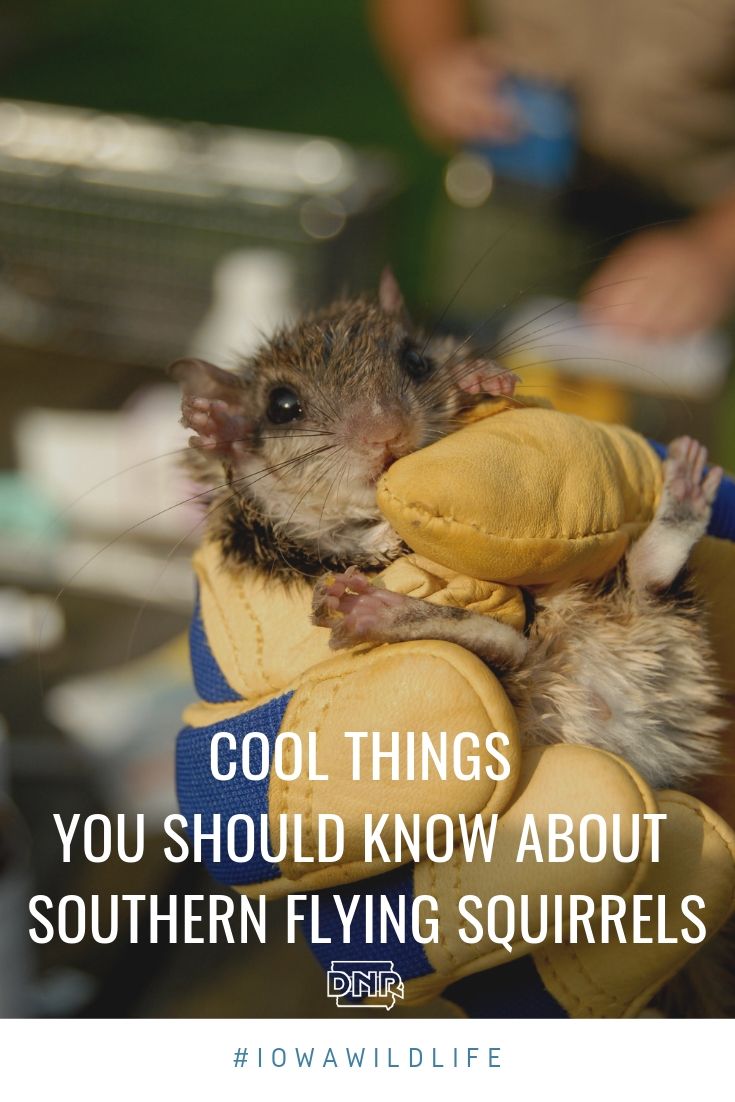It’s a bird! It’s a plane! It’s a… Southern flying squirrel? Rarely spotted, these critters are Iowa’s smallest squirrels.
Experts at hide and seek
Flying squirrels live statewide, but seeing them is a whole different story. These tiny squirrels are strictly nocturnal. When they sleep, they hide away in tree cavities, making it difficult to catch a glimpse of them.
 Cozy up
Cozy up
While solitary during the summer, as many as 20 flying squirrels may huddle together to survive the winter. After stashing away acorns and nuts for food, the group of squirrels will find a tree cavity or abandoned woodpecker hole to bed down while temperatures drop.
Up, up and away?
Even though their name suggests these squirrels can fly, that’s not quite the case. Southern flying squirrels have extra skin between their front and back legs, called patagia. The patagia acts as a wingsuit, allowing the squirrel to glide between trees. The squirrels can’t gain altitude, but they can glide up to 100 feet, though they usually have much shorter trips.
With their unique form of transportation, flying squirrels prefer living in mature forests in Iowa, so they can glide from tree to tree, with plenty of tree cavities to stop for rest. That makes Iowa areas such as eastern Iowa, areas along the Des Moines River corridor and Stephens State Forest prime locations for the squirrels.
Summer babies
Southern flying squirrels have two rounds of breeding each summer, the first in April and May and the second from August to September. After a 40-day gestation, a female flying squirrel will give birth to three to four young. The babies are naked, blind and deaf at birth, and wean after six to eight weeks. Even after weaning, the young might stay with their mother for a while longer. These mammals usually live three to five years, though there are reports of some individuals living as long as 10 years.
The most carnivorous squirrel
The main part of the flying squirrel’s diet consists of nuts and acorns, but they also snack on other plant-based things such as fruit, bark, buds, seeds, flowers, mushrooms and lichen. The southern flying squirrel is the most carnivorous of the squirrels, as they also eat insects, invertebrates, birds, eggs, nestlings and carrion.
Pink fur
Recently, biologists discovered that under ultraviolet light, flying squirrels glow a bright pink. This discovery means the squirrels are one of the only mammals known to flouresce, or absorb light in one color while emitting it in another. While the cause of fluorescence in flying squirrels is unknown, it’s speculated that it may help with night-time communication.
